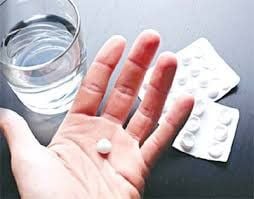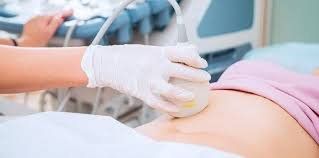This is an automatically translated article.
Ethinylestradiol is a synthetic estrogen, a derivative of Estradiol. Estrogen is widely used in oral contraceptives, often in combination with a progestin. It is also sometimes used in hormone replacement therapy in postmenopausal women.
1. What does Ethinylestradiol do?
Ethinylestradiol has many pharmacological effects including reducing FSH and LH concentrations, increasing plasma estradiol, inhibiting osteoclast-induced bone resorption, increasing serum high density lipoprotein concentrations, and lowering cholesterol levels total and low density lipoproteins. Ethinylestradiol helps preserve epithelial function and has a protective effect on the uterus.2. Indications and contraindications of Ethinylestradiol
2.1. Indications: Hormone replacement therapy in postmenopausal women to relieve symptoms of moderate and severe vasomotor disorders. Hormone replacement therapy in hypogonadal women. Menstrual disorders. Prevention of osteoporosis in women. Ethinylestradiol is used as an ingredient in oral contraceptives. Used as an analgesic for patients with advanced and inoperable prostate cancer; breast cancer. 2.2. Contraindications Women who are pregnant or suspected of being pregnant, because the drug can cause serious harm to the unborn baby. Women who are breastfeeding. Presence or suspicion of estrogen-dependent tumors, breast carcinoma, endometriosis, vaginal bleeding of unknown cause. History of thrombophlebitis, thromboembolic disorders associated with estrogen use. Liver failure, history of jaundice during pregnancy of unknown cause. Metabolic lipid disorders . Hypertension .
3. How to take Ethinylestradiol
Ethinylestradiol is taken orally. The dose of Ethinylestradiol for each patient depends on the patient's condition, tolerance and response. To minimize the risk of unwanted effects, the lowest effective dose of Ethinylestradiol should be used. Take Ethinylestradiol tablets once a day, at the same time each day.
3.1. Treatment of moderate to severe vasomotor disorders due to menopause Usual dose: 0.02 - 0.05 mg/day, given in cycles. However, some patients respond well to doses as low as 0.02 mg every two days. In early menopause in menstruating women: the effective dose is 0.05 mg x 1 time/day, administered for 21 consecutive days, then no drug for 7 days. During late menopause, a dose of 0.02 mg daily for the first few cycles was given, then increased to 0.05 mg daily in subsequent cycles. In patients with more severe symptoms (eg, after a double oophorectomy), an initial dose of 0.05 mg 3 times daily may be used. After clinical improvement (usually within a few weeks), the dose may be reduced to 0.05 mg once daily. The maintenance dose is adjusted according to the patient's tolerability and response to therapy, the lowest effective dose should be used. 3.2. Hormone replacement therapy in female hypogonadism: Dosage is 0.05 mg x 3 times/day, used in the first 2 weeks of a menstrual cycle, then progesterone in the second half of this cycle. . Continue taking the drug at the same dose for the next 3-6 cycles. A two-month pill-free period was followed to determine if the patient could maintain her menstrual cycle without taking hormones. If there is no menstrual period within 2 months of not taking the drug, it is possible to have additional courses of Ethinylestradiol - Progesteron. 3.3.Temporary treatment of advanced inoperable severe prostatic carcinoma Dose: 0.15 - 2 mg/day. Evaluation of the effectiveness of therapy is based on the improvement of the patient's symptoms, and the serum Phosphatase Acid concentration monitoring test. If ethinylestradiol therapy is effective in patients, symptoms usually improve clearly 3 months after starting treatment. If there is a good response to therapy, continue taking Ethinylestradiol until there is a significant improvement in the disease. An acute overdose of Ethinylestradiol can cause nausea. Stopping medication can cause bleeding in women. Treatment is mainly symptomatic and supportive.
4. Some notes when using Ethinylestradiol
Examine and ask carefully the patient's medical history before prescribing Ethinylestradiol, especially blood pressure, breast, abdominal organs or pelvis. Do not prescribe oral contraceptives for more than 1 year without re-examination of the patient. Monitor with caution in patients with cardiac or renal dysfunction, history of seizures, migraine, asthma or uterine fibroids while taking the drug.
The risk of thromboembolic disease due to use of Ethinylestradiol increases with age and smoking. Women over 35 years of age are advised to quit smoking.
Monitor glucose and triglyceride levels when starting the drug and periodically for patients at risk of diabetes or hypertriglyceridemia.
Pregnant women: Ethinylestradiol should not be used in this group because Estrogen can cause serious teratogenic effects. Several birth defects have been reported with sex hormone therapy, such as cardiovascular and limb defects.
Lactating women: According to research, Estrogen passes into breast milk so it can cause serious side effects in young children, consider whether to discontinue breastfeeding or discontinue the drug based on the importance of the drug to the child. mom. Using Ethinylestradiol for lactating women, the amount and quality of milk also decrease.
5. Ethinylestradiol side effects
Undesirable effects are usually dependent on dose, duration of treatment, sex and pre- or post-menopausal women. Therefore, the incidence and severity of side effects are more common with oral contraceptives than with hormone replacement therapy. Currently, the amount of estrogen contained in oral contraceptives has been greatly reduced, so the risk of side effects from taking these oral contraceptives has been greatly reduced.
Digestion: nausea, loss of appetite, abdominal cramps, bloating. Less common: gingivitis, diarrhea, vomiting. Endocrine, metabolic: breast enlargement in men, rapid weight gain, edema. Less common: hypercalcemia. Genitourinary system: vaginal bleeding, hypermenorrhea, amenorrhea, dysmenorrhea. Cardiovascular: hypertension, thrombosis. Less common: thrombophlebitis, stroke, pulmonary embolism, myocardial infarction. Central nervous system: dizziness, headache, chorea. Skin: skin irritation, tanning or pigmentation. Some other side effects: breast pain, breast enlargement, breast lump. Nausea and vomiting are the first reactions to estrogen therapy in some women, but this can go away with time. Reduce your risk by taking your medication with a meal or right before bed. Closely monitor the health of all women taking Ethinylestradiol.
Stop using Ethinylestradiol at signs of major depression, blood clots, embolism, severe hypertension, abnormal liver function tests or vision problems.
Breast pain, breast tenderness, edema may occur, reducing the dose of medication may help improve symptoms. Patients with a history of gallstones or deep vein thrombosis should receive subcutaneous or percutaneous estrogen implantation.
When Ethinylestradiol alone has a risk of developing endometrial cancer, it must be used in combination with Progestagen for at least 12 days/month orally for women who have not had a hysterectomy.
6. Ethinylestradiol drug interactions
Paracetamol when used in women taking oral contraceptives, the drug is cleared from the body faster and the analgesic effect may be reduced. Paracetamol increases the absorption of Ethinylestradiol from the intestine by about 20%. Hydrocortisone: Ethinylestradiol potentiates the anti-inflammatory effect by reducing the hepatic metabolism of hydrocortisone and altering the binding of corticosteroids to serum proteins. Note that the dose of hydrocortisone should be reduced when necessary. Oral anticoagulants: Estrogen may decrease the effectiveness of the drug. Minocycline: Ethinylestradiol increases facial pigmentation caused by Minocycline. Ethinylestradiol increases the effects and toxicity of zidovudine. Imipramine: Concomitant use with Ethinylestradiol may reduce the effect and increase the ototoxicity of Imipramine. Ethinylestradiol is a synthetic estrogen, a derivative of Estradiol. Estrogen is widely used in oral contraceptives, often in combination with a progestin. It is also sometimes used in hormone replacement therapy in postmenopausal women.
Follow Vinmec International General Hospital website to get more health, nutrition and beauty information to protect the health of yourself and your loved ones in your family.
Please dial HOTLINE for more information or register for an appointment HERE. Download MyVinmec app to make appointments faster and to manage your bookings easily.













